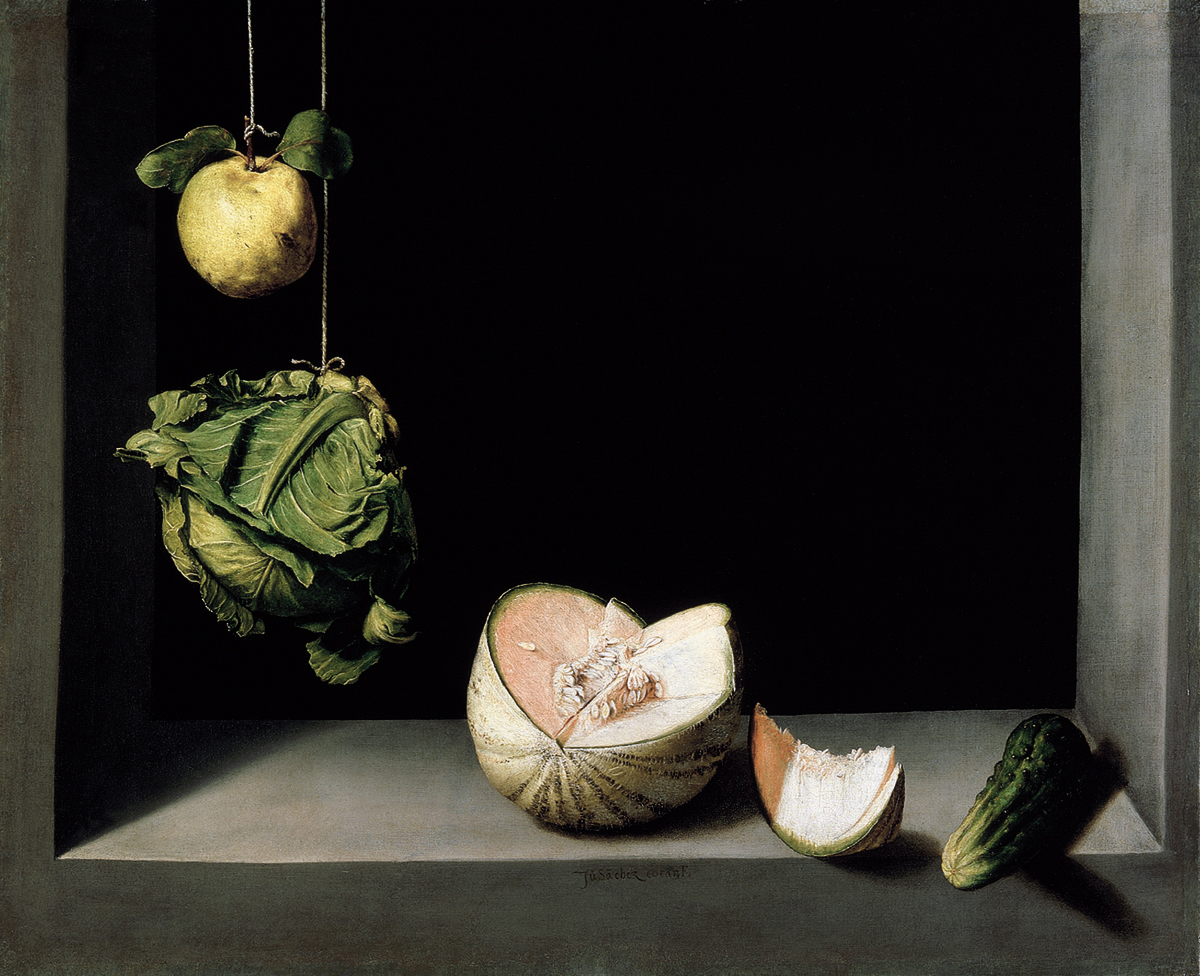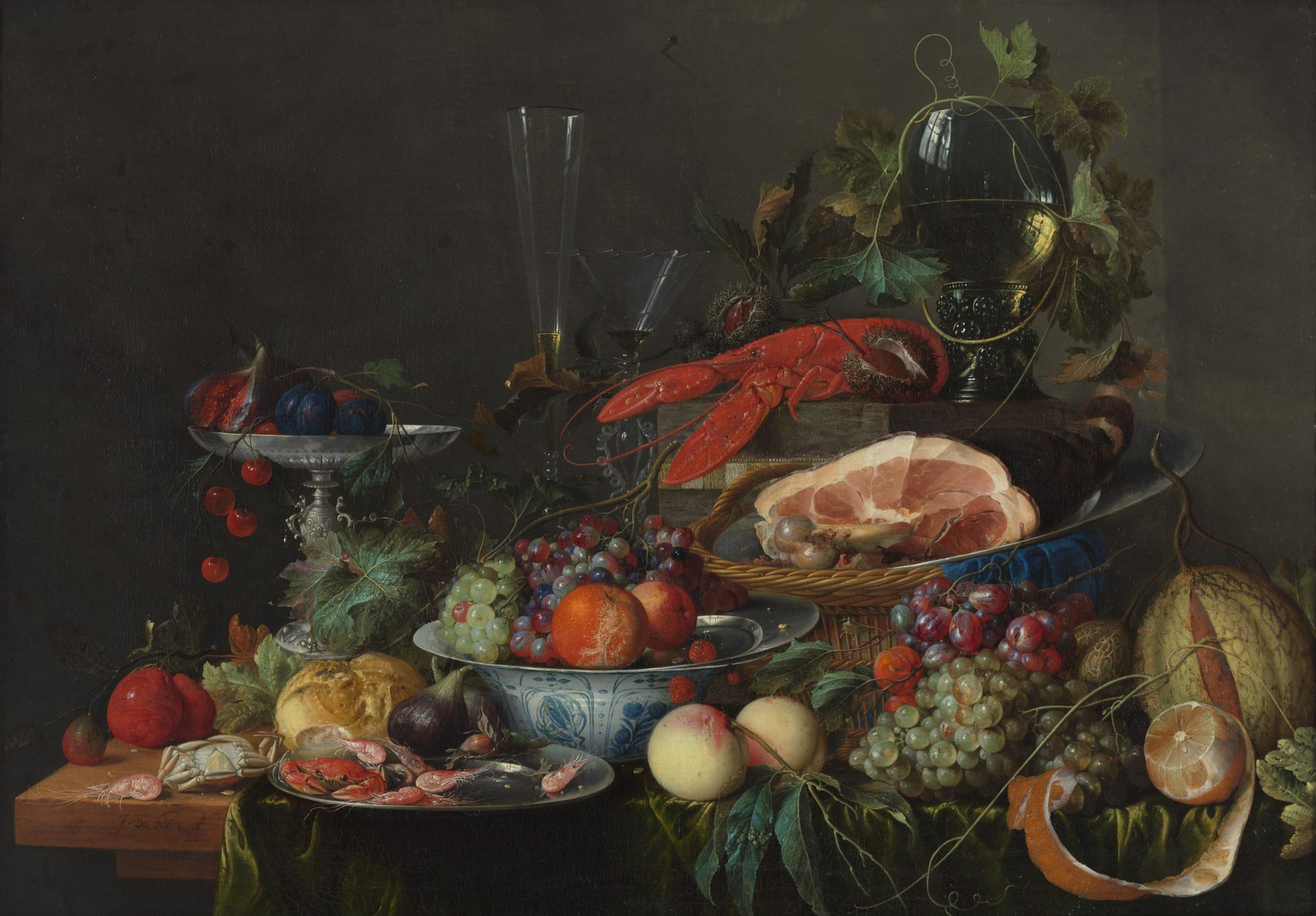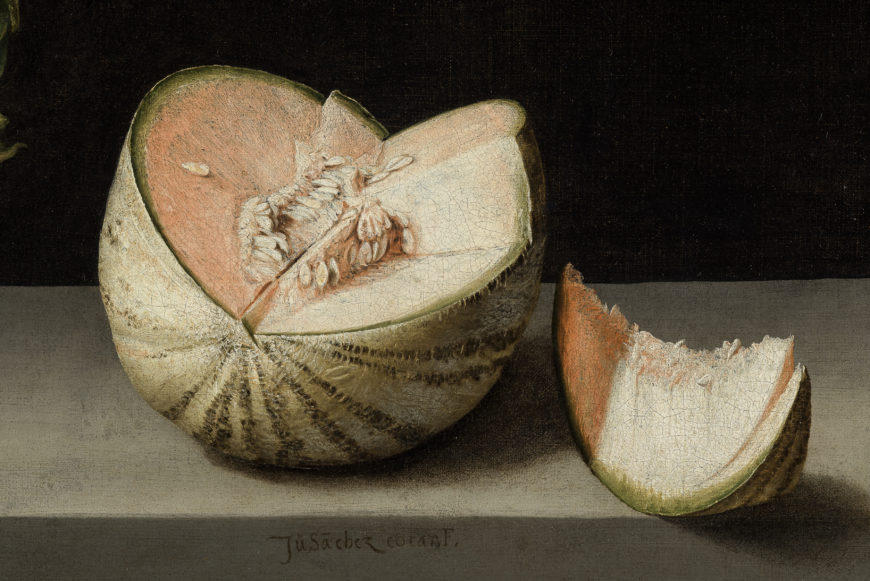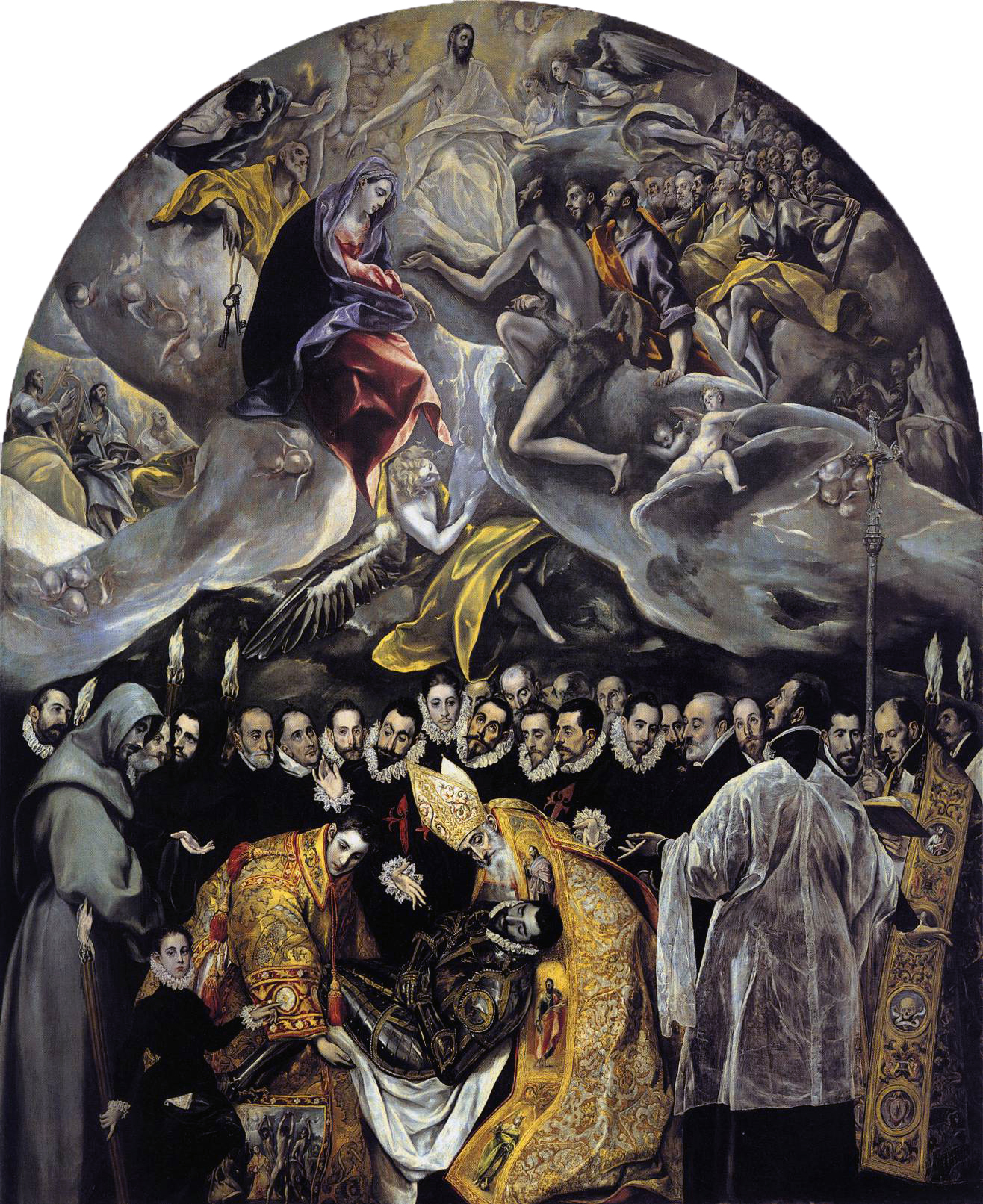
Juan Sánchez Cotán, Still Life with Quince, Cabbage, Melon, and Cucumber, c. 1602, oil on canvas, 68.9 cm x 84.46 cm (The San Diego Museum of Art)
Stark, spare, meticulous
This starkly simple still life by Juan Sánchez de Cotán is the kind of life-long puzzle that makes for great contemplative fodder on long plane rides and sleepless summer nights. What could a cabbage, cucumber, melon, and quince mean? Is there some underlying universal truth at the heart of their stark, spare, meticulous arrangement within the window’s inky, impenetrable darkness? Completely different from the voluptuous pronkstilleven, the ostentatious seventeenth-century still lifes of Dutch art—with their luscious lobsters, silver chargers, and glass vessels strewn in careless abandon—Cotán’s pristine austerity is akin to a vegetal altar.

Jan Davidsz. de Heem, Still Life with Ham, Lobster and Fruit, c. 1653, 75 x 105 cm (Boijmans Museum, Rotterdam)
Cotán was a pioneer of the Spanish still life bodegón, an arrangement of simple foodstuffs. Some historians have suggested he drew his inspiration from his own ascetic Carthusian piety. Born in Orgaz, his art developed in completely the opposite direction from El Greco, whose profuse and luxurious altarpiece of the Burial of Count Orgaz is located in the Cathedral of San Tomé, Toledo, where Cotán had a studio. Cotán’s still lifes, however, belong to his secular period before entering the monastery, after which he took up religious painting, later electing to leave the monastery and dying as a lay brother in Granada.
Archimedes’ hyperbola
If these still lifes are not ascetic deliberations, or early meditations on vegetarianism, what could they possibly mean? What of the quince and cabbage, suspended, as was typically done in country kitchens, to keep them from spoiling? Why a sectioned melon, seeds exposed, a quivering sliver sitting on the sill beside the cut fruit? The final member of the quartet is the intact cucumber, pushed over the edge of the sill toward the viewer, completing a sequence of gradual emergence from the window’s depths. In fact, the gradual, emergent curvilinear plane has been compared to Archimedes’ hyperbola, suggesting that such paintings, which were generally made for an educated, secular clientele, were perhaps understood as geometric meditations.
Archimedes was first translated and published by Federico Commandino in 1565 (Archimedis De iis quae vehuntur in aqua libri duo/ a Frederico Commandino restituti et commentariis illustrate), at approximately the same time that he published his own De Centro Gravitatis. Commandino’s work was followed by Luca Valerio’s De Centro Gravitatis in 1604—confirming a strong contemporary interest in spherical bodies that might be related to Cotán’s still-life experiments.

Detail, Juan Sánchez Cotán, Quince, Cabbage, Melon, and Cucumber, 1602, oil on canvas, 68.9 cm x 84.5 cm (San Diego Museum of Art)
Empire and conversion
Others have suggested that the arrangement of spheres and sectioned semi-spherical fruits and vegetables is to be understood in terms of astronomy, a representation of celestial bodies moving against the night sky, possibly in relation to celestial navigation. Spain was, of course, at the forefront of exploration in the fifteenth and sixteenth centuries. Or, they could represent specific celestial bodies in their various phases, although Galileo did not turn his telescope toward the moon until 1609. Finally, all four of the items here were introduced from Europe for cultivation in the Americas, perhaps alluding, however obliquely, to Empire and conversion.


